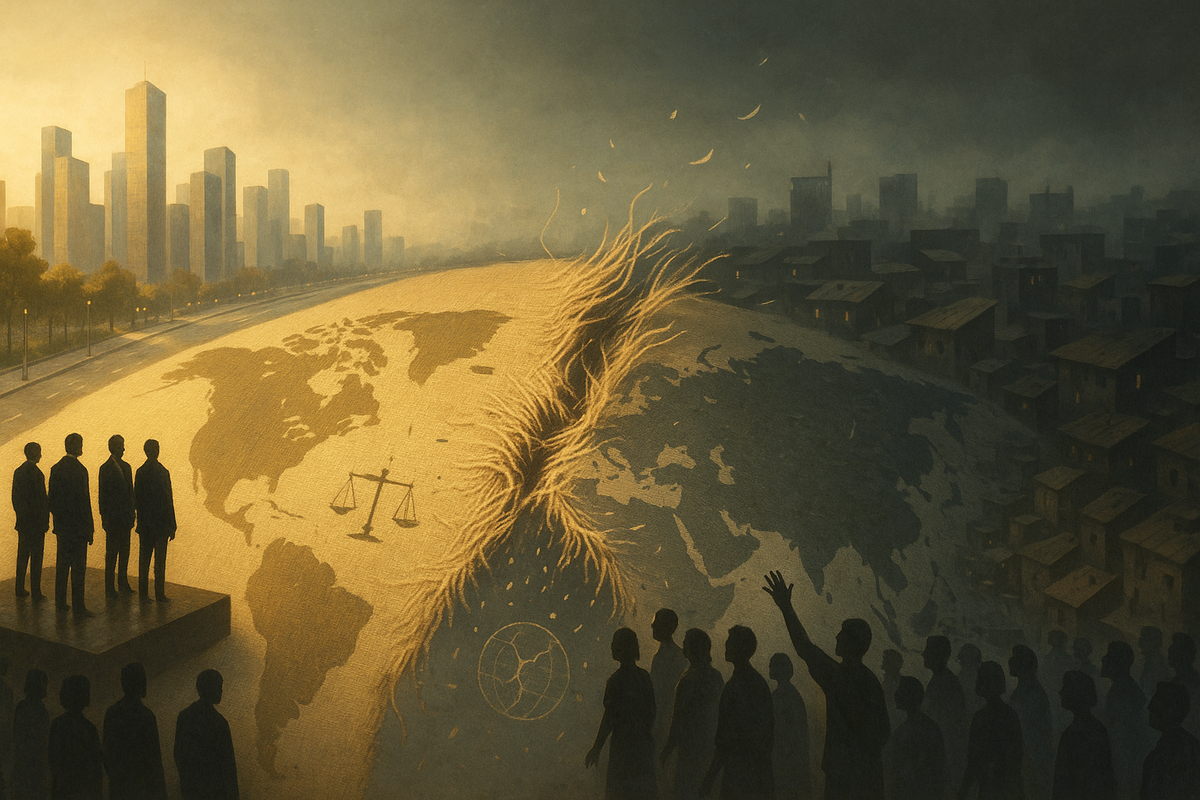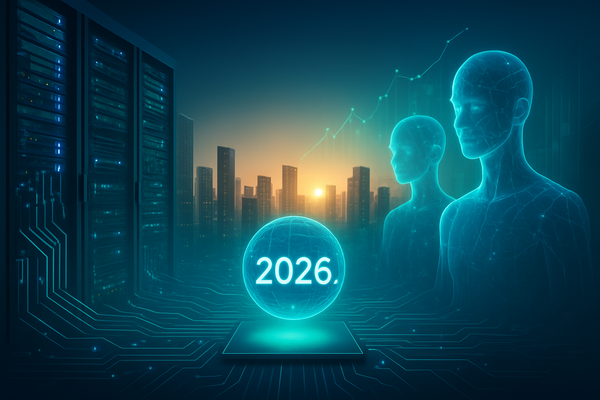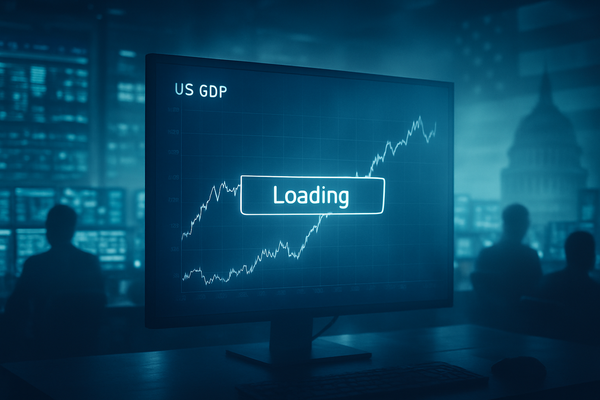The Unraveling Fabric: How Persistent Inequality Threatens Global Stability and Trust

The chasm between the world's wealthiest individuals and the vast majority of its population continues to widen at an alarming rate, posing a profound threat to global economic stability and social cohesion. Far from being a mere economic statistic, this persistent economic inequality and the ever-growing rich-poor divide are now fueling widespread social frustration, eroding public trust in institutions, and creating fertile ground for potential social unrest. Data from international bodies like Oxfam consistently highlight a world where the richest 1% control nearly half of all global wealth, a trend that is not only economically unsustainable but also deeply corrosive to the fabric of democratic societies and the promise of inclusive growth.
The Widening Chasm: A Crisis of Wealth and Trust
The relentless expansion of the rich-poor divide is not a new phenomenon, but its current trajectory and profound societal implications demand urgent attention. Recent analyses, including those from Oxfam and the World Bank, paint a stark picture: the wealthiest 1% of the global adult population now commands an astounding 45% of total world wealth, a figure that has significantly increased in recent years. In 2024, reports indicate that the wealth of the richest saw an unprecedented surge, growing three times faster than in the previous year, with hundreds of new billionaires emerging. This extreme concentration of wealth stands in stark contrast to the reality for the bottom 50% of the global population, who collectively possess a mere 2% of total wealth.
This disparity is not uniform but is acutely felt across major economies. In the United States, for instance, the wealthiest 1% of Americans hold 30.8% of the total U.S. net worth, while the bottom 50% own just 2.8%. Similarly, India has witnessed its richest 1% control over 40% of the country's total wealth, the highest level recorded in over six decades. China, despite its rapid economic growth, has seen its top 10% accumulate approximately 67% of the nation's wealth, with income disparity also rising significantly. These figures underscore a global trend where the benefits of economic growth are disproportionately captured by a small elite, leaving a substantial portion of the population struggling with stagnant wages, diminishing opportunities, and an increasing sense of being left behind.
The immediate implications of this widening gap extend far beyond economic metrics. It actively erodes social cohesion, fostering deep-seated resentment and increasing political polarization. This manifests as heightened social frustration among the populace, who perceive a system increasingly rigged against them. Such sentiments contribute to a significant erosion of trust in democratic institutions, economic systems, and even government itself. When a large segment of society believes that the rules are unfair and that their voices are unheard, the foundations of stability begin to crack, raising the potential for social unrest and profound societal disruption. The timeline of this escalating concern traces back decades, accelerating particularly since the 1980s with shifts towards neoliberal economic policies, deregulation, and globalization that, while boosting overall wealth, have often exacerbated internal inequalities within nations. Key stakeholders include national governments, international financial organizations like the International Monetary Fund (IMF) and the World Bank, and non-governmental organizations like Oxfam, all grappling with how to address this multifaceted crisis. Initial market reactions to discussions around inequality are often mixed, with some sectors expressing concern over potential policy interventions like wealth taxes, while others recognize the long-term risks to consumer demand and broader economic stability.
Winners and Losers in an Unequal World
In an increasingly unequal global economy, the lines between "winners" and "losers" become sharply defined, influencing corporate strategies, investment flows, and ultimately, the long-term viability of various industries. On one side, sectors catering to the affluent and ultra-wealthy often thrive, insulated from the economic anxieties that plague the majority. Luxury goods manufacturers, high-end real estate developers, bespoke service providers, and private wealth management firms are clear beneficiaries. Companies like LVMH Moët Hennessy Louis Vuitton (EPA: LVMH) or Richemont (SWX: CFR), purveyors of designer fashion, jewelry, and luxury experiences, often see robust demand regardless of broader economic downturns, as the spending power of the top earners remains strong. Similarly, the financial technology (FinTech) sector, particularly those serving high-net-worth individuals with complex investment needs, continues to expand.
Conversely, industries reliant on broad consumer purchasing power, especially those serving middle and lower-income households, face significant headwinds. Retailers offering affordable goods, traditional consumer packaged goods (CPG) companies, and segments of the hospitality and leisure industry can struggle with diminished demand as the majority of consumers face stagnant real wages and increasing cost-of-living pressures. Companies like Walmart (NYSE: WMT) or Target (NYSE: TGT), while large, must constantly adapt their strategies to cater to budget-conscious consumers, often by offering discount brands or loyalty programs. The automotive industry, particularly manufacturers of entry-level and mid-range vehicles, can also be impacted as fewer households can afford new car purchases. Furthermore, the rising cost of essential services like healthcare and education, often exacerbated by inequality, places a heavy burden on families, diverting their limited disposable income away from other consumer goods and services.
Beyond direct market impacts, companies can also be categorized as winners or losers based on their preparedness for potential policy shifts aimed at addressing inequality. Firms with robust corporate social responsibility (CSR) initiatives, fair wage policies, and diverse, inclusive workforces may be better positioned to adapt to new regulations or public pressure for more equitable practices. Conversely, companies perceived as contributing to inequality through exploitative labor practices, excessive executive compensation without corresponding worker benefits, or aggressive tax avoidance strategies could face significant reputational damage, consumer boycotts, and increased regulatory scrutiny. This dynamic compels businesses to consider not just their bottom line, but also their broader societal impact, as calls for redistribution and inclusive growth intensify.
Industry Impact and Broader Societal Implications
The pervasive issue of economic inequality is not merely a standalone challenge; it intricately weaves into broader industry trends and carries far-reaching societal ramifications. One significant trend is the increasing demand for automation and artificial intelligence (AI) across various sectors. While proponents argue for efficiency gains, critics warn that without careful policy, these technologies could further exacerbate inequality by displacing lower-skilled workers and concentrating wealth among those who own and control the advanced technological infrastructure. This could have ripple effects on industries from manufacturing and logistics to customer service, potentially widening the income gap within corporations and across the labor market.
The ripple effects of this profound economic divide are felt across competitors and partners alike. Companies that prioritize short-term profit maximization at the expense of fair wages and benefits may gain a competitive edge in the immediate term, but risk long-term instability due to reduced consumer purchasing power and a disengaged workforce. This can put pressure on competitors to follow suit, leading to a "race to the bottom" that ultimately harms overall economic health. Supply chains are also vulnerable; if a significant portion of consumers cannot afford basic goods, demand for raw materials and intermediate products declines, affecting upstream suppliers. Moreover, the erosion of trust in institutions driven by inequality can destabilize political environments, making long-term business planning more challenging and increasing investment risks.
The growing public discourse around inequality is inevitably leading to significant regulatory and policy implications. Governments globally are facing increasing pressure to implement measures aimed at redistribution and fostering inclusive growth. This includes debates around wealth taxes, higher minimum wages, stronger social safety nets, progressive taxation on corporate profits and high incomes, and investments in public education and healthcare. For instance, discussions around a global minimum corporate tax rate aim to reduce tax avoidance by multinational corporations, potentially freeing up government revenue for social programs. Historically, periods of extreme inequality, such as the Gilded Age in the late 19th and early 20th centuries, often led to significant social reforms and regulations, including the rise of labor unions and antitrust laws, suggesting that similar policy shifts could be on the horizon. Comparing this to the post-World War II era, which saw a significant reduction in inequality in many Western nations due to strong labor movements, progressive taxation, and robust social programs, highlights the potential for policy interventions to reshape economic outcomes.
What Comes Next: Navigating the Future of an Unequal World
The trajectory of economic inequality presents a complex array of short-term and long-term possibilities, demanding strategic pivots from both governments and corporations. In the short term, we are likely to see continued public outcry and political pressure for immediate interventions. This could manifest as increased protests, a rise in populist political movements, and more aggressive calls for social programs and direct wealth transfer mechanisms. Governments might respond with temporary relief measures, such as enhanced unemployment benefits or targeted subsidies, to mollify immediate frustrations. For businesses, this means navigating a potentially volatile consumer landscape and increased scrutiny over pricing, labor practices, and executive compensation.
Looking further ahead, the long-term possibilities point towards a critical juncture: either societies move towards more robust, systemic solutions for inclusive growth, or they risk deepening social fragmentation and instability. Policy debates will intensify around structural reforms like universal basic income (UBI), significant investments in public education and vocational training to enhance social mobility, and comprehensive reforms to tax codes to ensure fairer contributions from corporations and high-net-worth individuals. Potential strategic pivots for corporations might include a greater emphasis on stakeholder capitalism, where companies prioritize the interests of employees, customers, suppliers, and the community alongside shareholders. This could lead to higher minimum wages, improved benefits, and more equitable profit-sharing schemes, potentially boosting consumer purchasing power and fostering greater brand loyalty.
Market opportunities and challenges will undoubtedly emerge from this evolving landscape. Companies that innovate to create affordable, high-quality goods and services for a broader consumer base, rather than solely focusing on the luxury market, may find new avenues for growth. The burgeoning "impact investing" sector, which prioritizes social and environmental benefits alongside financial returns, is also poised for expansion. Conversely, businesses that resist adapting to calls for greater equity and transparency could face significant reputational damage, regulatory penalties, and declining market share. Potential scenarios range from a gradual, policy-driven rebalancing of wealth, leading to more stable and inclusive economies, to more disruptive outcomes marked by significant social unrest and political upheaval if the underlying issues of inequality remain unaddressed.
The Unfinished Business of Economic Justice
The current state of economic inequality represents not just a pressing economic challenge, but a fundamental threat to the stability and social cohesion of nations worldwide. The research unequivocally highlights a world where wealth continues to concentrate at an unprecedented pace within the hands of a select few, while the vast majority grapple with economic precarity. This isn't just about statistics; it's about the very real human cost of diminished opportunities, eroding trust in institutions, and the growing specter of social frustration and unrest. The immediate implications are clear: without deliberate and sustained interventions, the societal fabric will continue to fray, undermining the foundations of democratic governance and inclusive prosperity.
Moving forward, the market and political landscape will be increasingly shaped by the imperative to address this rich-poor divide. While some companies may continue to profit from catering to the ultra-wealthy, the long-term sustainability of such models is questionable in the face of widespread discontent. Investors should watch for shifting policy environments, particularly around taxation, labor laws, and social welfare programs, which will inevitably influence corporate profitability and sector-specific growth. Companies demonstrating genuine commitments to equitable practices, fair wages, and community investment may not only gain a social license to operate but also unlock new market opportunities by fostering broader consumer purchasing power and loyalty.
Ultimately, the significance of persistent economic inequality lies in its potential to redefine societal norms and economic structures. The historical parallels to periods of significant social upheaval driven by economic disparities serve as a potent warning. The coming months and years will be critical in determining whether global societies can collectively pivot towards a more equitable and inclusive future, or if the widening chasm will lead to deeper divisions and instability. The challenge is immense, but so too is the opportunity to forge an economic future that truly serves all, rather than just a privileged few.



